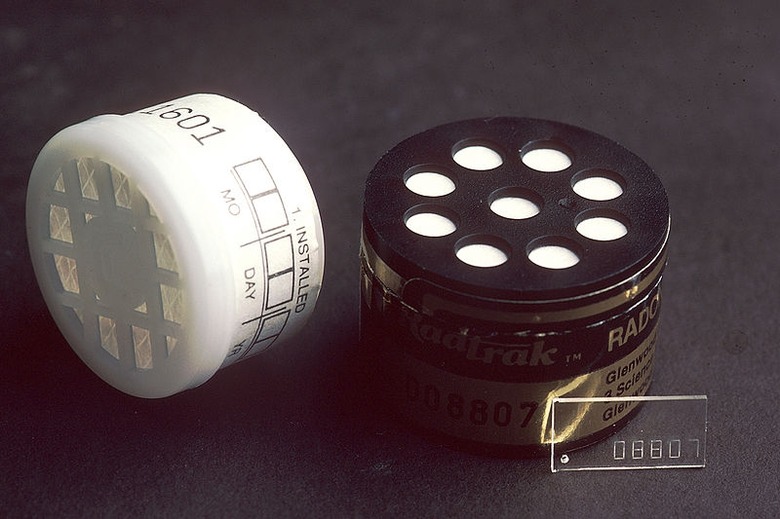How Do Radon Test Kits Work?
We may receive a commission on purchases made from links.
Testing your home for the presence of radon is the only way to detect this invisible, odorless gas, which the United States Surgeon General reports as the second leading cause of lung cancer after smoking. Radon tests are easy to use and are also inexpensive. Radon tests only measure the radon level inside your home; they do not remove this gas. If your test results show an elevated radon level, you can consult a radon mitigation specialist to seek advice about the best radon reduction/removal strategy for your home.
Tip
There are different kinds of radon tests, each of which works differently to achieve the same goal of measuring the specific level of this gas in your home's environment.
Short-Term Radon Test Kits
Short-Term Radon Test Kits
Depending on the manufacturer, short-term radon test kits return results from two to 90 days, which makes the "short" in "short term" highly variable. They're also referred to as passive radon test kits because you simply place the detector in your home and leave it alone until the testing time has ended. At this point, you'll send the kit to the manufacturer's laboratory, which notifies you of its findings after reading the results and compiling the data.
The charcoal radon test kit is a short-term testing method that works by using charcoal to absorb radon gas over a two- to 90-day period. As the fastest radon testing option, charcoal kits are also the least expensive and least accurate method. Radon gas levels fluctuate over time, even spiking and plunging again. A short-term kit offers only a snapshot of radon levels along an abbreviated timeline, which doesn't show the high spikes over time.
Long-Term Radon Test Kits
Long-Term Radon Test Kits
Instead of the intermittent peaks and valleys that a short-term radon test kit may record during a short testing window, which can skew overall results, a long-term testing option delivers more accurate results. A long-term radon test kit is more expensive than a short-term kit but less expensive than an ongoing, permanent radon detector. Regardless of the type of detector you have or the test kit you use, they're all measuring the amount of radon gas in pCi/L, or picocuries per liter of air. An acceptable threshold is 4 pCi/L.
One type of long-term kit is the alpha-track test kit, which uses polycarbonate plastic sheets to detect radon gas. The alpha particles that radon gas emits leave tracks on these sheets. After the testing period ends, you send the kit to the manufacturer, where its laboratory staff interprets the tracks left on the plastic sheets and determines radon levels. Like the charcoal test kits, alpha-track test kits are also passive testing options, offering a "set it and forget it" approach to measuring radon gas.
Ongoing Radon Test Kits
Ongoing Radon Test Kits
Some ongoing radon test kits or detectors are permanently installed in your home for continuous monitoring of radon gas levels. These detectors work by using sensors that detect the alpha particles that radon gas emits into the air. The sensors communicate to the monitor, effectively translating the results into the digital readout to display the pi/Cl radon levels. Ongoing detectors have a digital readout that displays regularly updated results, which means that you do not have to send any component of the device to a laboratory or depend on lab results.
Ongoing monitors may be battery powered or are wired into your home's electrical system. You can even use a detector that's integrated to your smartphone or smart home system. The monitors are typically the size of a thermostat, and they're the most accurate home radon testing option. Regardless of which type of radon test kit or detector you choose, shop around before making your final decision because individual features and costs vary among different models.
